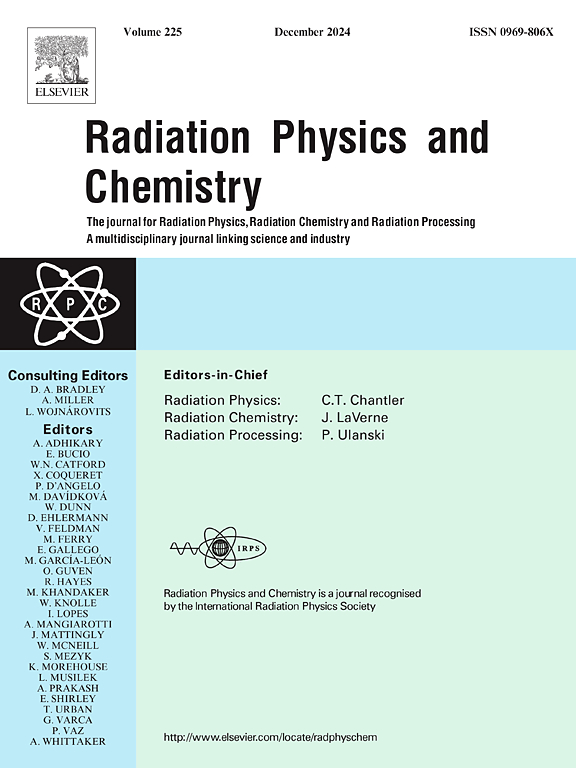在使用 177Lu 进行放射性同位素治疗时,辐射防护装置对减少医务人员职业辐射剂量的效果
IF 2.8
3区 物理与天体物理
Q3 CHEMISTRY, PHYSICAL
引用次数: 0
摘要
本文章由计算机程序翻译,如有差异,请以英文原文为准。
Effectiveness of radiation protectors to reduce occupational radiation dose of medical staff when performing radioligand therapy with 177Lu
Recently, the radioactive nuclide 177Lu has been applied to clinical radioligand therapy. The β-rays emitted from 177Lu are used for radiation therapy. Although this nuclide also emits γ-rays that can be used to image radioactive isotope distributions, it causes an exposure dose risk to medical staff who operate the radioligand therapy. This study investigates the radiation-shielding effectiveness of lead protectors during 177Lu radioligand therapy, based on γ-ray spectra. Both simulations and experimental measurements were conducted to obtain spectra of γ-rays penetrating lead shields. The corresponding air kerma values were calculated from the obtained γ-ray spectra, and the dose reduction factor (DRF) was evaluated. The study found that a lead thickness of 2.0 mm achieves a DRF of 90 %. However, 177Lu also contains several low-energy γ-ray components (e.g., 57 keV and 113 keV), suggesting that thinner lead could be effective for shielding them. We then found that even thicknesses in the range of 0.07 mm–0.75 mm, which have been used as actual protectors, were effective. More specifically, a DRF of 50–55 % was obtained with a protector having a lead-equivalent thickness of 0.50 mm. In conclusion, we propose the use of lead protectors for occupational dose reduction when performing radioligand therapy with 177Lu.
求助全文
通过发布文献求助,成功后即可免费获取论文全文。
去求助
来源期刊

Radiation Physics and Chemistry
化学-核科学技术
CiteScore
5.60
自引率
17.20%
发文量
574
审稿时长
12 weeks
期刊介绍:
Radiation Physics and Chemistry is a multidisciplinary journal that provides a medium for publication of substantial and original papers, reviews, and short communications which focus on research and developments involving ionizing radiation in radiation physics, radiation chemistry and radiation processing.
The journal aims to publish papers with significance to an international audience, containing substantial novelty and scientific impact. The Editors reserve the rights to reject, with or without external review, papers that do not meet these criteria. This could include papers that are very similar to previous publications, only with changed target substrates, employed materials, analyzed sites and experimental methods, report results without presenting new insights and/or hypothesis testing, or do not focus on the radiation effects.
 求助内容:
求助内容: 应助结果提醒方式:
应助结果提醒方式:


